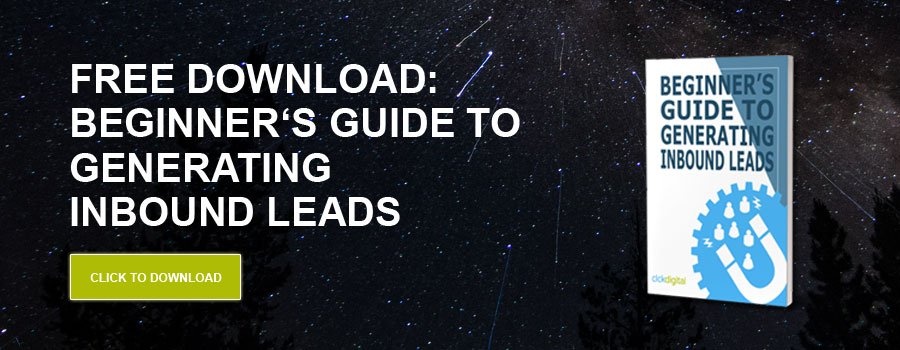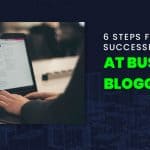When we do website review videos for our potential clients, a consistent theme is that businesses rarely have any kind of content offer for visitors to download.
And if they do, it’s not something that their audience finds compelling.
This is a HUGE missed opportunity and one of the first things we help them fix to increase the quantity of inbound leads.
By simply adding one or more pieces of content, whether text, video, image, or interactive tools, for visitors to access, you’ll immediately begin capturing more leads while educating your prospective customers about your industry, AND establishing yourself as an expert in your niche.
Not bad for a relatively small amount of time and effort, right?
Sound good? Okay, here’s how to do it better!
Why Offer “Gated” Content on Your Website?
When we talk about “gated” content we’re talking about content offers where the visitor needs to give some information, at a minimum their email address, to access the content.
Most websites only convert 1% of their traffic into leads – usually from people filling in the contact form or picking up the phone.
By adding one or more content offers you give people an alternative to filling in the contact form or calling you. Remember, 99% of people on your website are not ready to buy, they are simply gathering info. So give them the info they need, in the form of gated content.
When creating content offers for clients, we typically see around a 500% increase in new website leads from people downloading the offers and becoming an email lead. Find out more about working with us.
Once you have the person’s email address, you can then send them regular emails to nurture them along the buyer journey. You can do this with broadcast emails (e.g. your latest blog post) or, what we like to do, by using an automated lead nurture sequence of around 6 emails delivered over several weeks (depending on the length of your sales cycle) from the time of sign up. These emails educate the person about your product or service and addressing their objections through FAQs and testimonials. Think of them like your “greatest hits”.
Another benefit is that as well as capturing the lead and educating them about your product or service, you also position yourself as an expert in your industry because you’re answering questions and helping them.
Now for the three types of content you need to be using at each stage of the funnel…
Top of Funnel (TOFU) Content
Top of funnel content is for people who are only just realising they need a solution to whatever problem they are having. This is typically aimed at people in or before the “awareness” stage.
They are EARLY in the buyer journey and are simply educating themselves about the issue at hand and the industry in general. They are NOT ready to talk to a salesperson or make a purchase decision … YET.
The idea here is to sign these people up using helpful content (no selling!), and then – using the techniques we’ll get to shortly – when they finally are ready to make a purchase decision over the coming days, weeks, months, or even years, you become the logical choice.
Examples of ungated TOFU content:
- Blog posts
- Video blogs
- Infographics
- Social media posts
- Explainer videos
- Top of funnel/awareness ads (promoting content)
- Case study positioned as “How we helped X do Y”
Examples of gated TOFU content:
- Info packs
- White papers
- How-To guides and videos
- Cheat sheets
- Blueprints & templates
- Webinars (90% informational/helpful)

TOFU offers should be informational, not sales oriented.
Middle of Funnel (MOFU) Content
Often called the “messy middle”, it’s this part of the funnel that most businesses really struggle to create effective content.
MOFU content is for people who are already familiar with your industry and brand and are now looking for help to choose the right solution or vendor.
These are people who are still not quite ready to have a one-to-one conversation with a salesperson (sometimes they are), but they are getting closer to making a purchase decision, and are looking for information on which to base their decision.
Keep in mind, middle of funnel content is probably the least “important” stage of content. It’s nice to have, but not essential. We typically build out the bottom and top of funnel first, then the middle is something you can flesh out later to bridge the gap.
The great thing is, if you’re already created helpful content at the TOP of the funnel, by the time we get to the middle you have a pretty good head start because you’ve already built some brand recognition and trust with these people.
Examples of MOFU content:
- Case studies & success stories about how your solution helped
- Comparisons (e.g. your product/service vs competitor – strengths and weaknesses)
- Apps and calculators (e.g. “Find your dream home…”)
- Webinars (can be more product/service focused)
- Research with stats to back up a buying decision

MOFU offers ask a little more of the customer.
Bottom of Funnel (BOFU) Content
BOFU content is for people who are ready to buy. They know which solution they need for their problem, and they are now choosing WHO will be the best person to buy from.
Hopefully, by now you’ve already engaged with this person at earlier stages, and now this is your chance to close the sale, often without even having interacted with them previously (this is why content marketing can be so effective and scalable, resulting in a lower cost per lead for the sales team).
Examples of BOFU content offers:
- Get a quote
- Free assessments
- Audit or review
- Free consultations
- Software demo or free trial

BOFU offers are for people who are ready to buy.
The whole point of BOFU content offers is to take the contact from a marketing lead to a sales lead by getting to a one-to-one conversation. From here they can be qualified as a lead and either handed over to sales (if qualified) or put back into a marketing nurture/backburner (if unqualified).
But Wait, How Exactly Do I Create All This Content?!
You might be thinking “this is all well and good, but how the heck am I going to create 3 pieces of epic content and get it in front of my web visitors at the right time?!”.
Relax, it’s not that hard when you approach it systematically. Here are some quick and easy ways to get started with creating a gated lead magnet:
- Re-purpose existing content and create a greatest hits compilation. For example, if you already have a blog, you can take your 10 best articles and put them into a PDF, calling it a “quick start guide” or “ultimate guide to X”.
- Take an internal document you use with your team and/or customers, like some sort of process template or checklist, and offer it as a “blueprint” or “cheat sheet”.
- If you’ve ever run a webinar or recorded a Zoom call, take the recording, edit it to remove any sensitive or personal info, and offer it is an “on-demand training”.
- Take your existing offline brochure or product sheet and call it an “info pack” for download as a PDF.
- Create a “pricing guide” for your product, service, or industry.
- Build a simple “assessment tool” where the visitor answers some questions and gets an instant score or result based on their answers. There are several tools to help with this such as the Interact quiz builder. An added bonus to this approach is that you also get to profile the person based on their answers!
Of course, if you don’t have the time or resources to do all this you can also outsource some or all of it to a copywriter or digital marketing agency to do it for you.

A cheat sheet can simply be a spreadsheet or template that helps solve a problem.
The main thing to remember is that a content offer doesn’t need to be some sort of 30-page white paper that costs a fortune to produce. Some of the most successful opt-in offers can be a simple one-page checklist or blueprint. (One of our most successful content offers ever is a diagram of our high-ticket marketing funnel). It’s not the quantity of content in your offer, but the quality.
I’m a huge proponent of the concept “perfect is the enemy of good enough”. Much better to get something basic up and improve on it over time, than delay by trying to get everything perfect while you COULD be capturing leads the whole time.
How Do You USE This Gated Content on Your Website?
Now that you’ve created a few pieces of content that provide value to your ideal customers by helping them solve a problem, it’s time to get it working for you to capture those valuable leads!
A few simple ways you can do this are:
- Embed a call to action (CTA) at the end of your blog posts with a related TOFU offer
- Create landing pages for each content offer spelling out the benefits – these will convert much better than just a form on the page
- Popups and slide-ins on key pages of your site, or after a visitor spends a set amount of time on a page
- Place CTAs on the footer or sidebar of all pages (or relevant pages – e.g. BOFU offer on product page)

Placing your offers at the end of specific pages gives users a logical “next step”
Extra tip: Once you’ve captured the lead and added them to your mailing list, use the later content types, delivered via email, to move them closer to the bottom of the funnel. This will shorten your sales cycle and result in an overall lower cost to acquire a customer.
Taking it Further
Here are some “pro tips” for when you’ve mastered the above basics:
Get your sales team involved in the content process so they can be using your content to educate their leads – e.g. sending case studies and comparisons to address specific objections. Sales should also be reporting back to marketing on frequent questions and objections they hear, so marketing can create content addressing these.
Use your CRM to automate lead rotation to your sales team, and have people follow up bottom of funnel conversions within a day of them taking the action on your site. Having a good sales process is essential to making the most of the leads you’ll generate using these methods.
Use email automation to create a follow-up email sequence – this way, when someone downloads an offer on your site they’ll get emails from you over the coming days and weeks, educating them about your product or service and building trust.
Ideally, you’ll go on to create several pieces of content at each stage of the funnel. A good rule of thumb though is the inverted pyramid – you want more content offers at the top of the funnel, leading down to fewer MOFU offers, and then depending on your business model and sales process, you can generally just have one BOFU offer.

So in a perfect world you might have 5+ different TOFU offers discussing all different aspects of your product/industry, and in a range of formats – video, text, and infographic. Then one or two MOFU, and one BOFU offer.
Final Word on Gated Content for Different Stages of Your Funnel
As you can see, offering your website visitors something to opt-in for that doesn’t involve a sales conversation is a fast and effective way to increase the quantity of inbound leads, while making it quicker and easier to progress those leads along the buyer journey.
We typically see a 3X-5X increase in website leads just from implementing these simple strategies. That can add up to hundreds or even thousands of extra leads each month, and when times are tough economically, it’s great to have those email leads to call on when you have a new product or service announcement, or news about your business or industry.
What’s YOUR biggest challenge when it comes to creating gated content offers? Let me know in the comments section below. And don’t forget to check out our content offers to stay in touch (and see how we nurture email leads after sign up).

- How Videos Can Be Used in Email Marketing for More Engagement - April 4, 2022
- Attention Home Builders: Here’s How to Educate, Engage and Win Over Potential Customers - October 19, 2020
- The Best Digital Marketing Framework for High Ticket Businesses - September 14, 2020







